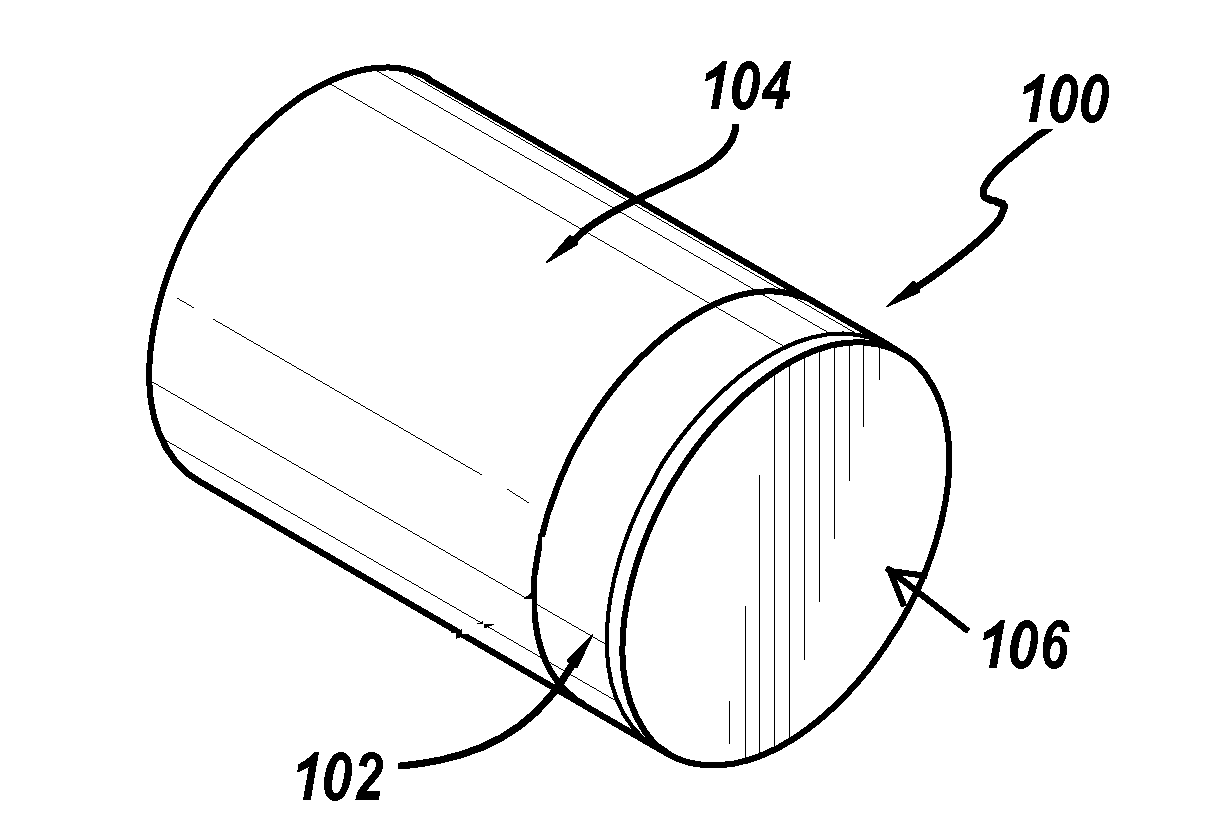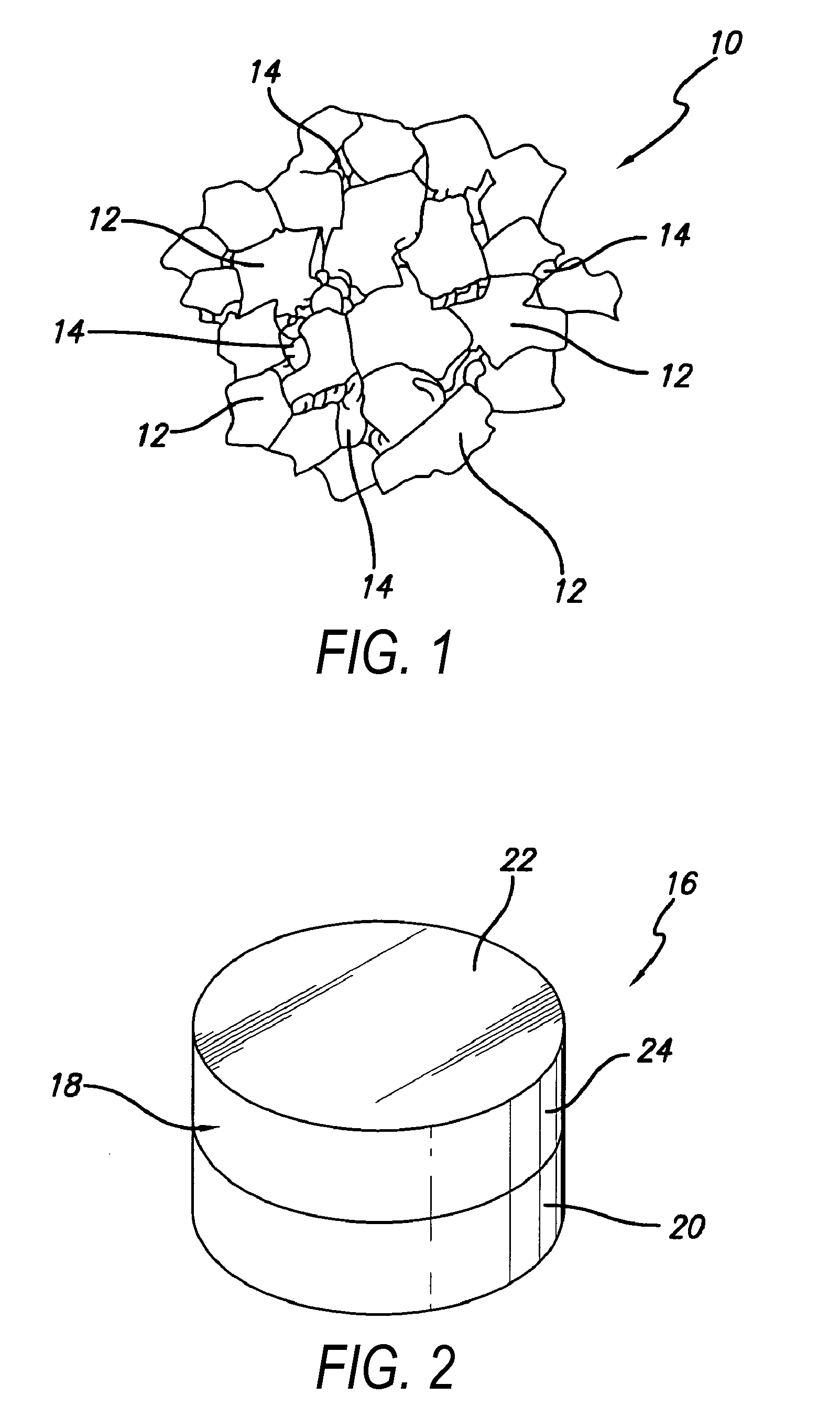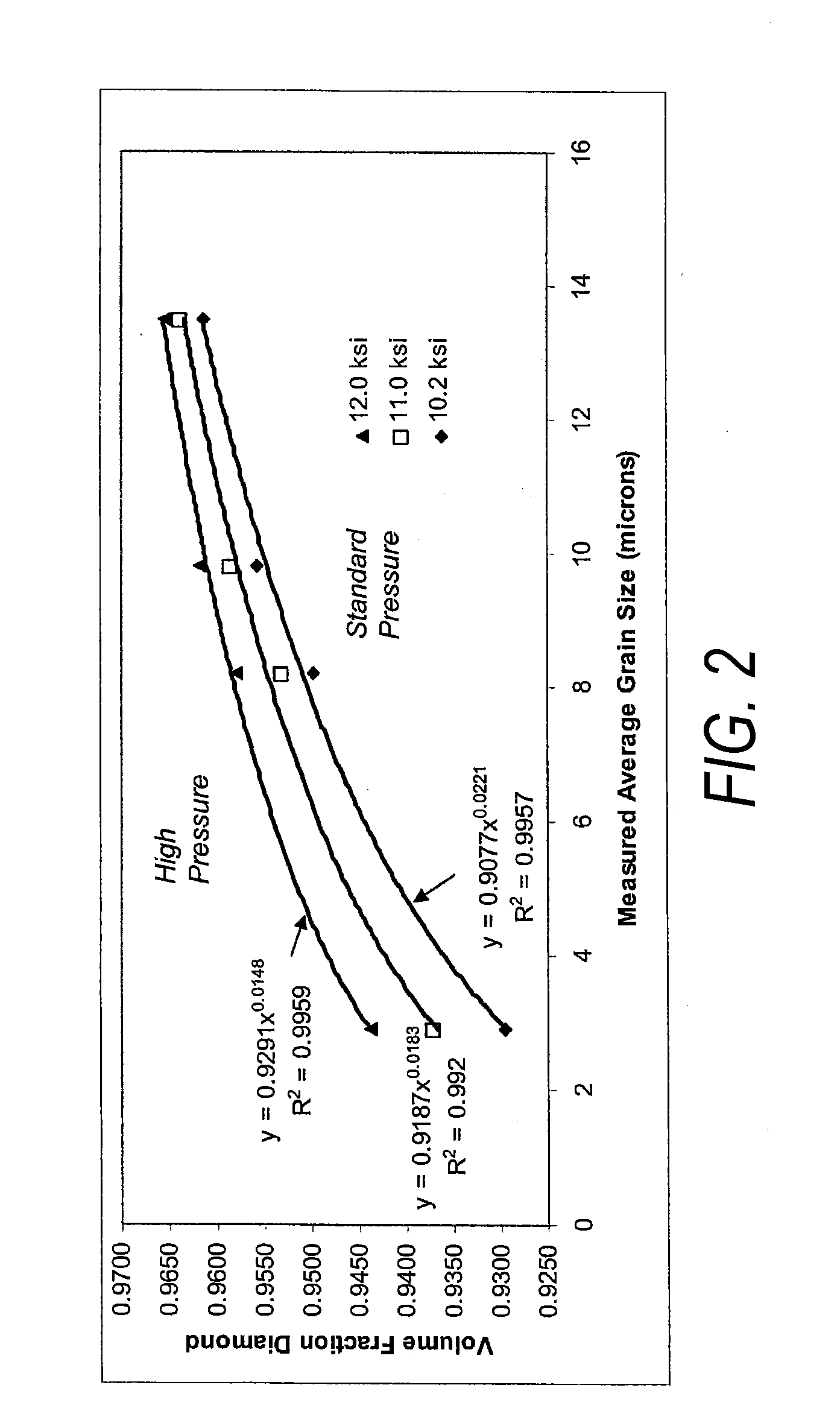Polycrystalline Diamond Constructions Having Optimized Material Composition
- Summary
- Abstract
- Description
- Claims
- Application Information
AI Technical Summary
Benefits of technology
Problems solved by technology
Method used
Image
Examples
example embodiment
[0089 PCD bodies comprise a gradient volume of the catalyst material as described above. In a preferred embodiment, the volume content of the catalyst material at a working surface is less than about 7 percent. The maximum volume content of the catalyst material may be approximately 10 percent, and exists along the interface with the substrate. In an example embodiment, the volume content of the catalyst material in the diamond body may be from 2 to 10 percent, depending on the particular location within the body and the grain size of the material.
[0090]For applications calling for high levels of abrasion resistance and / or thermal stability and low levels of fracture toughness, the catalyst content at the working surface may be close to zero, as the catalyst material in a region of the diamond body extending from the working surface may be leached or otherwise treated to remove the catalyst material therefrom, and the volume content of catalyst material in the diamond body extending...
PUM
| Property | Measurement | Unit |
|---|---|---|
| Length | aaaaa | aaaaa |
| Length | aaaaa | aaaaa |
| Length | aaaaa | aaaaa |
Abstract
Description
Claims
Application Information
 Login to View More
Login to View More - R&D
- Intellectual Property
- Life Sciences
- Materials
- Tech Scout
- Unparalleled Data Quality
- Higher Quality Content
- 60% Fewer Hallucinations
Browse by: Latest US Patents, China's latest patents, Technical Efficacy Thesaurus, Application Domain, Technology Topic, Popular Technical Reports.
© 2025 PatSnap. All rights reserved.Legal|Privacy policy|Modern Slavery Act Transparency Statement|Sitemap|About US| Contact US: help@patsnap.com



